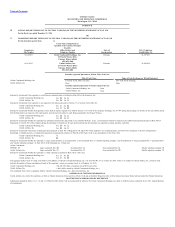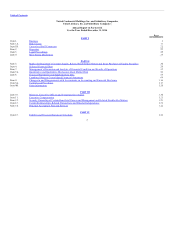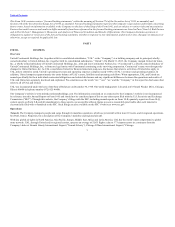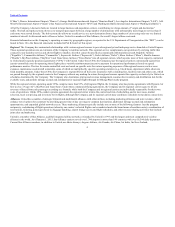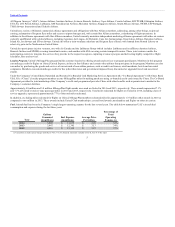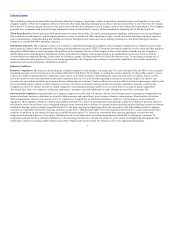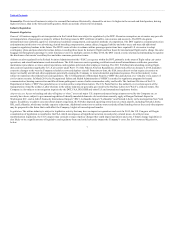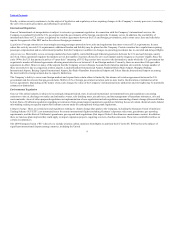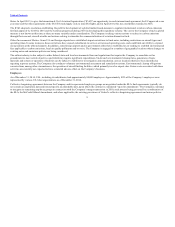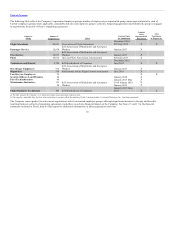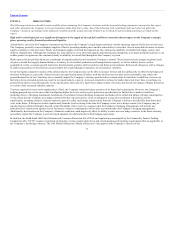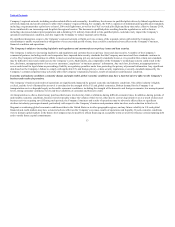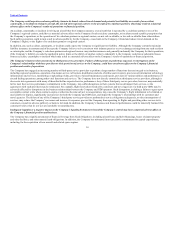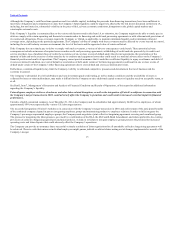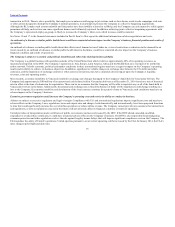United Airlines 2014 Annual Report Download - page 6
Download and view the complete annual report
Please find page 6 of the 2014 United Airlines annual report below. You can navigate through the pages in the report by either clicking on the pages listed below, or by using the keyword search tool below to find specific information within the annual report.
Table of Contents
The availability and price of aircraft fuel significantly affect the Company’s operations, results of operations, financial position and liquidity. To provide
adequate supplies of fuel, the Company routinely enters into short-term and long-term purchase contracts and has some ability to store fuel close to its major
hub locations. To protect against increases in the prices of aircraft fuel, the Company routinely hedges a portion of its future fuel requirements. The Company
generally uses commonly used financial hedge instruments based on aircraft fuel or closely related commodities including diesel fuel and crude oil.
Third-Party Business. United generates third-party business revenue that includes fuel sales, catering, ground handling, maintenance services and frequent
flyer award non-air redemptions, and third-party business revenue is recorded in Other operating revenue. United also incurs third-party business expenses,
such as maintenance, ground handling and catering services for third parties, fuel sales and non-air mileage redemptions, and those third-party business
expenses are recorded in Other operating expenses.
Distribution Channels. The Company’s airline seat inventory is distributed through the Company’s direct channels, traditional travel agencies and on-line
travel agencies. Agency sales are primarily sold using global distribution systems (“GDS”). United has developed capability to sell certain ancillary products
through the GDS channel to reach customers who purchase in that channel. The use of the Company’s direct sales website, united.com, the Company’s
mobile applications and alternative distribution systems, provides the Company with an opportunity to de-commoditize its services, better control its
content, make more targeted offerings, better retain its customers, enhance its brand and lower its ticket distribution costs. To encourage customer use of
lower-cost channels and capitalize on these cost-saving opportunities, the Company will continue to expand the capabilities of its website and mobile
applications and explore alternative distribution channels.
Domestic Competition. The domestic airline industry is highly competitive and dynamic. Currently, any U.S. carrier deemed fit by the DOT is free to operate
scheduled passenger service between any two points within the United States. The Company’s competitors consist primarily of other airlines and, to a lesser
extent, other forms of transportation. Competition can be direct, in the form of another carrier flying the exact non-stop route, or indirect, where a carrier
serves the same two cities non-stop from an alternative airport in that city or via an itinerary requiring a connection at another airport. Air carriers’ cost
structures are not uniform and there are numerous factors influencing cost structure. Carriers with lower costs may offer lower fares to passengers, which could
have a potential negative impact on the Company’s revenues. Decisions on domestic pricing are based on intense competitive pressure exerted on the
Company by other U.S. airlines. In order to remain competitive and maintain passenger traffic levels, we often find it necessary to match competitors’
discounted fares. Since we compete in a dynamic marketplace, attempts to generate additional revenue through increased fares oftentimes fail.
International Competition. Internationally, the Company competes not only with U.S. airlines, but also with foreign carriers. International competition has
increased and may increase in the future as a result of airline mergers and acquisitions, joint ventures, alliances, restructurings, liberalization of aviation
bilateral agreements and new or increased service by competitors. Competition on international routes is subject to varying degrees of governmental
regulation. The Company’s ability to compete successfully with non-U.S. carriers on international routes depends in part on its ability to generate traffic to
and from the entire United States via its integrated domestic route network and its ability to overcome business and operational challenges across its network
worldwide. Foreign carriers currently are prohibited by U.S. law from carrying local passengers between two points in the United States and the Company
experiences comparable restrictions in foreign countries except where “fifth freedom rights” have been negotiated between the U.S. government and other
countries. In addition, in the absence of open skies and fifth freedom rights, U.S. carriers are constrained from carrying passengers to points beyond
designated international gateway cities due to limitations in air service agreements and restrictions imposed unilaterally by foreign governments. To
compensate partially for these structural limitations, U.S. and foreign carriers have entered into alliances, joint ventures and marketing arrangements that
enable these carriers to exchange traffic between each other’s flights and route networks. See above, for additional information.
6

